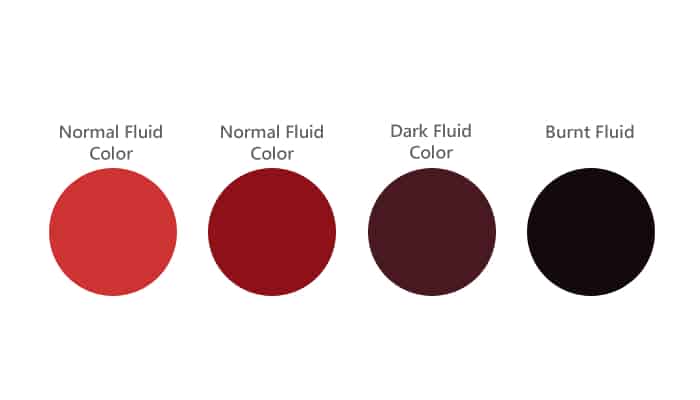Understanding Transmission Fluid for Your F250
When it comes to keeping your Ford F250 running smoothly, one of the most critical components is the transmission fluid. This fluid not only lubricates the moving parts within the transmission but also helps in cooling and cleaning the system. For the 2012 F250, using the correct type of transmission fluid is essential to ensure optimal performance and longevity.
Manufacturer’s Recommendations
| Popular posts |
|---|
| What to do to prolong the life of your manual gearbox |
| Automatic transmission: what it is, how it works |
Ford has specific guidelines for the type of transmission fluid that should be used in the 2012 F250. According to the manufacturer, the recommended fluid is:
– Mercon LV Automatic Transmission Fluid: This is a low-viscosity fluid designed to provide excellent performance in a variety of temperatures and conditions. It meets the stringent requirements set by Ford for their automatic transmissions.
Specifications of Mercon LV
Mercon LV is formulated to provide the following benefits:
– Enhanced Fuel Economy: The low viscosity of Mercon LV helps improve fuel efficiency by reducing drag within the transmission.
– Superior Protection: It offers excellent protection against wear and tear, which is crucial for maintaining the health of your transmission over time.
– Thermal Stability: This fluid is designed to withstand high temperatures, ensuring that it maintains its properties even under heavy loads or extreme driving conditions.
– Compatibility: Mercon LV is compatible with various seal materials, reducing the risk of leaks and ensuring a tight seal within the transmission system.
Why Using the Right Fluid Matters
Using the correct transmission fluid is not just a recommendation; it’s a necessity. Here’s why:
- Performance: The right fluid ensures that your transmission shifts smoothly and efficiently. Using the wrong type can lead to sluggish shifting and even transmission failure.
- Longevity: Proper lubrication and cooling provided by the correct fluid can significantly extend the life of your transmission. This can save you from costly repairs down the line.
- Warranty Compliance: If your vehicle is still under warranty, using the specified fluid is crucial to avoid potential warranty issues. Ford may deny claims if the wrong fluid is used.
Where to Find the Right Fluid
You can find Mercon LV at various automotive parts stores, dealerships, and online retailers. Always check the label to ensure that you are purchasing the correct fluid.
In summary, using the right transmission fluid for your 2012 F250 is essential for maintaining performance, ensuring longevity, and complying with warranty requirements. Stick to the manufacturer’s recommendations, and your truck will thank you for it.
Recommended Oil Brands for Your F250 Transmission Fluid
When it comes to choosing the right transmission fluid for your 2012 Ford F250, not all fluids are created equal. While the manufacturer recommends Mercon LV, there are several brands that have garnered positive feedback from truck owners and automotive forums. Here’s a breakdown of some of the most recommended brands based on real-world experiences.
Popular Brands Among F250 Owners
Many F250 owners have shared their experiences and preferences in various online forums. Here are some of the top brands that consistently come up in discussions:
- Ford Motorcraft Mercon LV: As the OEM (Original Equipment Manufacturer) fluid, this is the go-to choice for many owners. Users report that it provides excellent performance and longevity, making it a safe bet for maintaining the health of your transmission.
- Valvoline MaxLife ATF: This brand is well-regarded for its high-quality formulation. Many users have noted improved shifting performance and reduced slipping after switching to Valvoline MaxLife. It’s also praised for its compatibility with various transmission types.
- Mobil 1 Synthetic ATF: Known for its synthetic formulation, Mobil 1 is a favorite among those looking for enhanced performance. Owners have reported smoother shifts and better overall transmission response, especially in extreme conditions.
- Castrol Transmax LV: This fluid is designed specifically for vehicles requiring Mercon LV. Users appreciate its affordability and performance, often noting that it performs comparably to OEM fluids.
- Royal Purple Max ATF: This brand is known for its high-performance synthetic oils. Many truck owners have shared positive feedback regarding its ability to reduce heat and improve shifting, making it a popular choice for those who tow or haul heavy loads.
Owner Feedback and Experiences
The feedback from F250 owners can provide valuable insights into which brands perform best in real-world conditions. Here are some common themes and experiences shared by users:
- Performance Under Load: Many owners who frequently tow heavy trailers or carry heavy loads have reported that synthetic options like Mobil 1 and Royal Purple offer superior performance. They noted that these fluids help maintain smooth shifting even under stress.
- Temperature Control: Several users have mentioned that certain brands, particularly Valvoline and Royal Purple, help keep the transmission cooler, which is crucial during long hauls or in hot climates.
- Longevity and Maintenance: Owners who have switched to high-quality synthetic fluids often report longer intervals between fluid changes and less frequent maintenance issues. This can lead to significant cost savings over time.
- Price vs. Performance: While some owners are willing to pay a premium for brands like Mobil 1 and Royal Purple, others have found that more affordable options like Castrol and Valvoline perform just as well for their needs. It often comes down to personal preference and budget.
Where to Buy
You can find these recommended brands at various automotive retailers, both online and in-store. Popular options include:
- AutoZone
- O’Reilly Auto Parts
- Advance Auto Parts
- Walmart
- Amazon
Before making a purchase, always check the product specifications to ensure compatibility with your 2012 F250. Reading reviews and feedback from other truck owners can also help you make an informed decision.
Change Interval for Your F250 Transmission Fluid
Understanding when to change your transmission fluid is crucial for maintaining the performance and longevity of your 2012 Ford F250. While the manufacturer may provide a general guideline, real-world usage and driving conditions can significantly affect how often you should perform this maintenance.
Recommended Change Intervals
For the 2012 F250, the general recommendation for changing the transmission fluid is typically around:
- 30,000 to 60,000 miles (48,000 to 96,000 km) under normal driving conditions.
- 15,000 to 30,000 miles (24,000 to 48,000 km) if you frequently tow heavy loads or drive in severe conditions, such as extreme temperatures or stop-and-go traffic.
These intervals can vary based on individual driving habits and conditions. It’s essential to keep an eye on your vehicle’s performance and any signs that may indicate the need for a fluid change.
Signs That It’s Time for a Change
Look for the following indicators that may suggest it’s time to change your transmission fluid:
- Difficulty shifting gears or slipping.
- Unusual noises, such as grinding or whining, when the transmission is engaged.
- Dark or burnt-smelling fluid.
- Fluid leaks under the vehicle.
Partial Transmission Oil Changes
In many cases, a full transmission fluid change can be a complex process that involves removing the transmission from the vehicle. This is not only time-consuming but can also be costly. As a result, many owners opt for partial transmission fluid changes, which can be performed more easily and frequently.
Benefits of Partial Changes
Partial changes involve draining a portion of the old fluid and replacing it with new fluid. Here are some benefits of this approach:
- Cost-Effective: Partial changes are generally less expensive than full fluid changes, making them more accessible for regular maintenance.
- Improved Fluid Quality: Regular partial changes can help maintain better fluid quality by continually replacing degraded fluid with fresh fluid, which helps keep the transmission clean and lubricated.
- Less Downtime: Since partial changes are quicker and easier to perform, you can get back on the road sooner without the need for extensive labor.
Statistical Justification
According to the American Transmission Rebuilders Association (ATRA), regular maintenance, including fluid changes, can extend the life of a transmission significantly. They report that vehicles with well-maintained transmissions can last well over 200,000 miles (320,000 km) with proper care.
Additionally, a study published by the Society of Automotive Engineers (SAE) indicates that maintaining clean transmission fluid can reduce wear on internal components by up to 50%, which further supports the practice of regular fluid changes, whether partial or full.
By keeping up with your transmission fluid changes, you are not only ensuring smoother operation but also potentially saving yourself from costly repairs down the line.
What Color Should Transmission Fluid Be?


